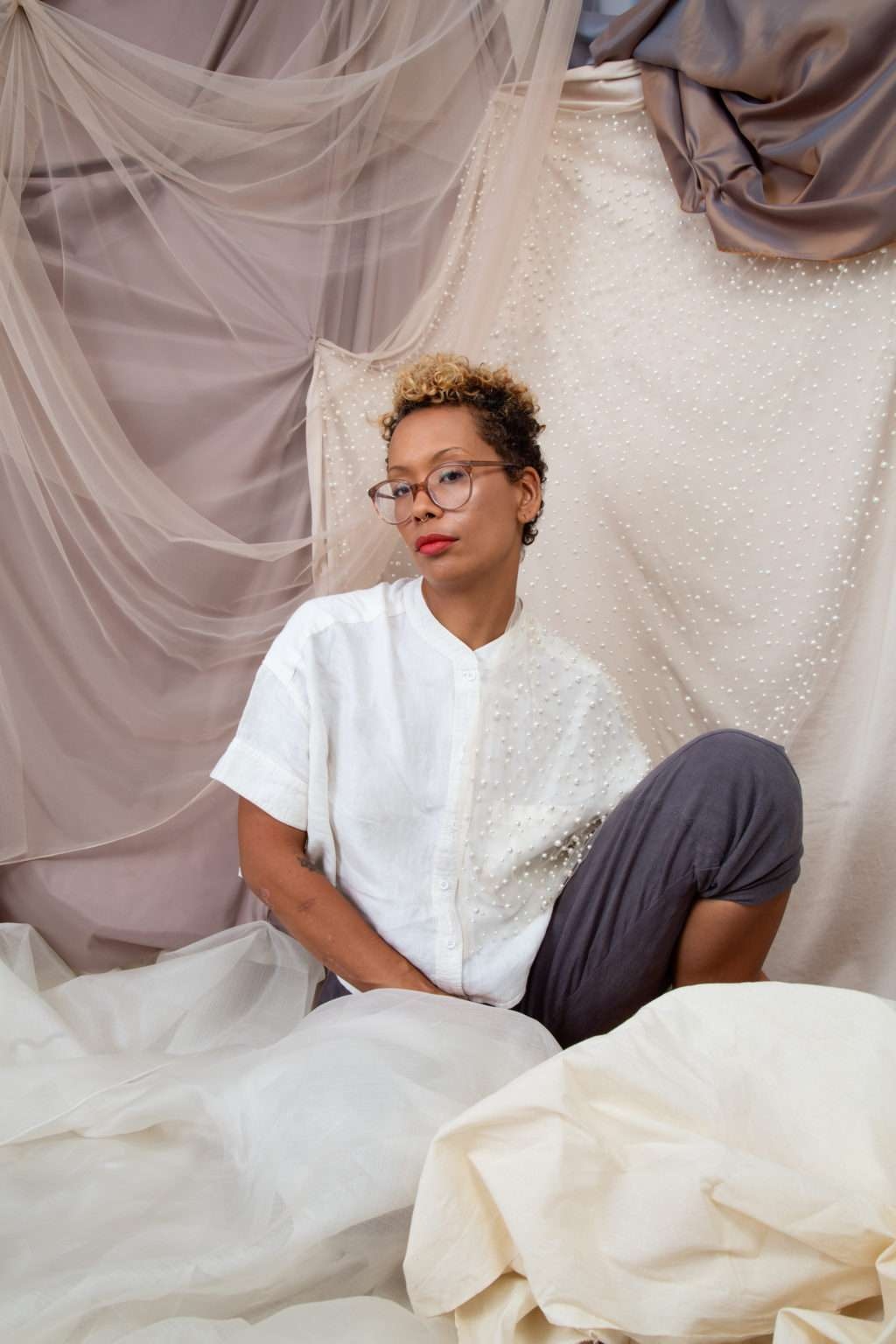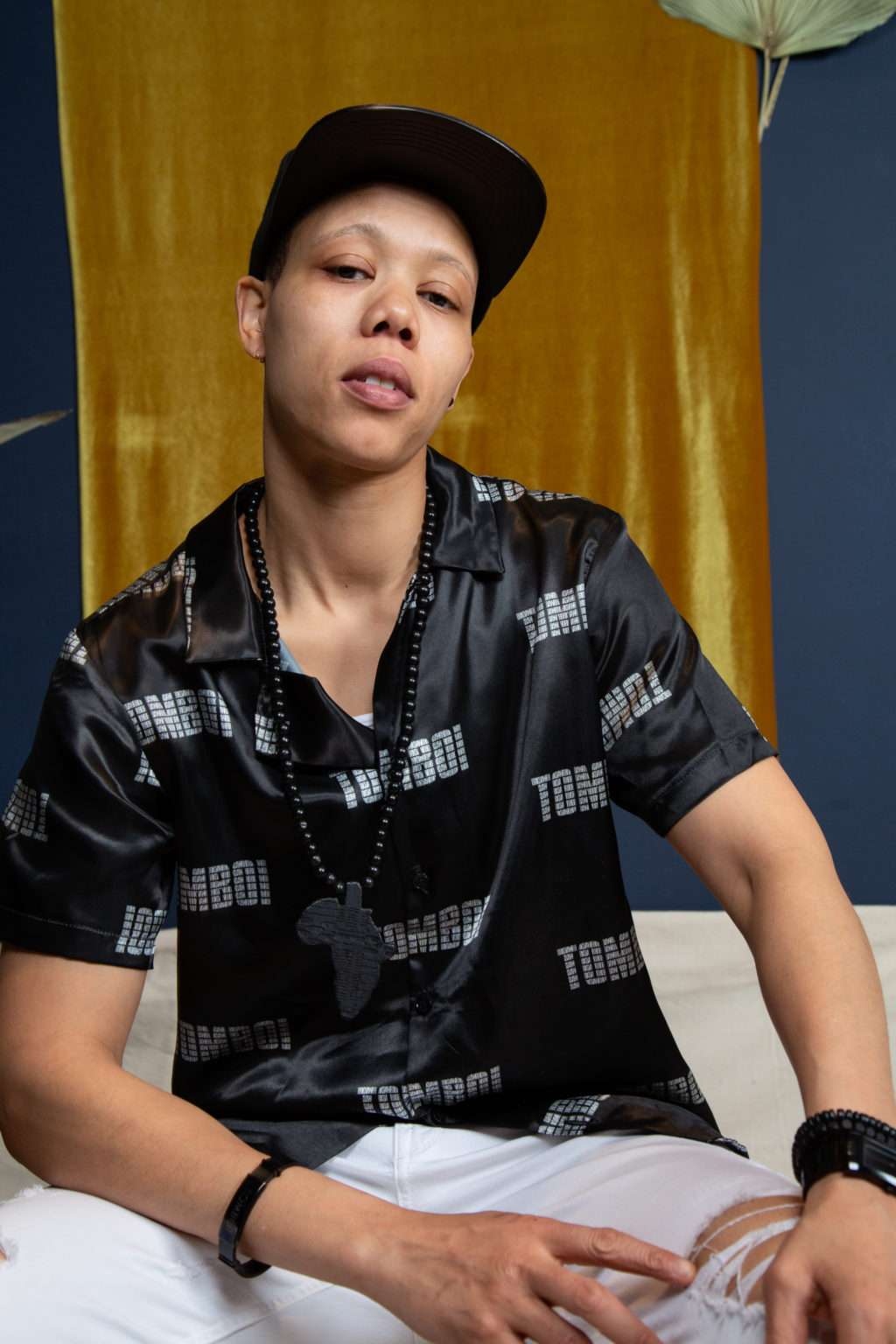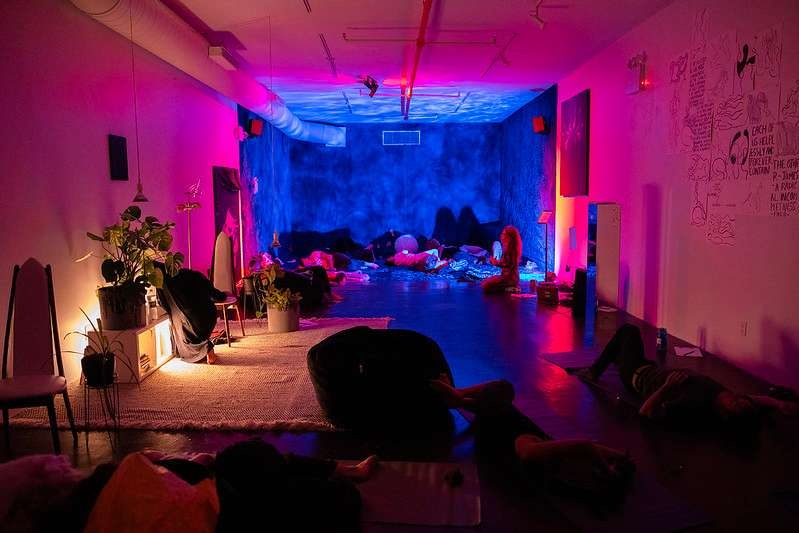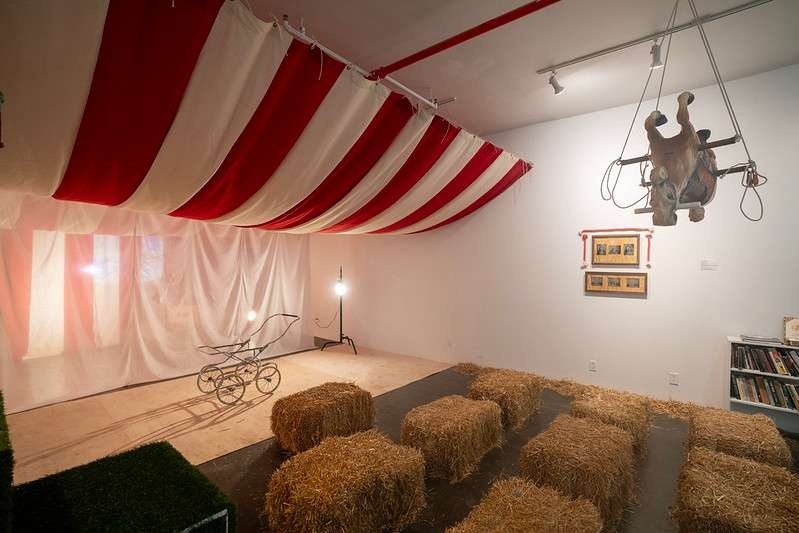Shuffling the Deck: Queer Communities and Evolutions in Naima Green’s Pur·suit
Madeleine Seidel
For a force so stabilizing and centering, the concept of community as we know it is fluid and ever-changing. We are our own sanctuary in hell, our own moral code when one does not exist, and a family when our blood is far away––but eventually our communities will be gone, evolving into something more of the moment. Out of pain, chaos, and hopefully transformation through collective liberation, we see the needs of our communities and our communities themselves shift. As our needs and desires change, so will the way we connect with our fellow humans, but how will we remember the systems that nurtured us long after they’re gone?
In my (pre-pandemic, pre-protest, pre-everything) conversations with photographer Naima Green earlier this year in preparation for her Recess session Pur·suit, we discussed the concept of community and the myriad ways it can be represented visually as a means of preservation. Pur·suit’s origins can be traced to Green’s MFA research at ICP-Bard, where she encountered Catherine Opie’s photographic series Dyke Deck (c.1995). Opie’s project consists of portraits of lesbian people, drawn from the San Francisco lesbian community of which Opie was a part, transposed onto playing cards. This objet d’art––featuring frank and undeniably campy representations of lesbian presentations and subcultures, ranging from couples to jocks, femmes to butch lesbians, and those in and out of California’s leather community––was both a time capsule of specific lesbian communities and a representation of joy and persistence following the horror of the AIDS epidemic. In the 90s, this photo set was radical for its success in creating a dynamic, culturally-specific portrait of a microcosm of West Coast queerness, but Opie’s focus can be read as myopic in hindsight considering its overwhelmingly white participants and desire to classify the sitters into neatly defined categories of queerness when contemporary understandings of gender identity and sexual orientation are purposefully more fluid.
Noticing the vast differences between Opie’s community and the community she photographed in Brooklyn, Green wanted to expand this visual archive and received Opie’s blessing to recreate Dyke Deck to document a more expansive vision of queerness and queer community in the current moment. In its first iteration in 2018, Pur·suit appropriated Dyke Deck’s playing card structure to archive and represent the beauty and fluidity of LGBTQIA+ life in the borough. Often featuring a single sitter, these portraits are soft but strong: set against a background of fabric, each sitter has the agency to pose and dress as they please. There is an undeniable sense of confidence, pride, and love in these portraits, and together they show a community allied by their mutual quest for liberation, comfort, and pleasure. In Pur·suit’s earliest photoset, the sitter is positioned in front of draped pastel fabrics. It’s a glamorous setting that in many ways is reminiscent of an old-fashioned portrait studio, reflecting how the purely aesthetic elements of self-styling and identity-shaping can be transformative and affirming.


Yunique, from “Pur·suit,” 2018 | NAIMA GREEN
Yunique (2018) shows the sitter perched on a stool in three-quarters profile, fist propping up their chin. The bright pattern of their shirt contrasting with well-worn Converse tennis shoes is at once elegant and handsome, simultaneously referencing street style and the portraits of Malian photographer Seydou Keïta. In Jenna (also 2018), there is a radiance to the sitter, amplified by the highlights on the high points of their face and the bejeweled mesh that is draped over their right shoulder. While these subtleties of style may evade other photographers, Green accurately portrays these details as critical in constructing––and to a certain extent, deconstructing––persona and presentation within queer communities.


JENNA, from “Pur·suit,” 2018 | NAIMA GREEN
A few months back in March 2020, Green would begin a new version of Pur·suit at Recess’ Fort Greene space, featuring new sitters and new aesthetic frameworks. The pastel background of the 2018 project was replaced by bright, jewel-toned cloth and plants, and the new sitters have a more self-assured and comfortable aura to them. In Toni, the sitter is shot at close distance, a clear compositional departure from the earliest iterations of Pur·suit, that highlights their relaxed yet confident posture and head positioning. The image is full of small intimate details such as their jewelry and ripped jeans, giving this series a vulnerability that marks it as a true departure from the aesthetic focus that dominated Dyke Deck and the first version of Pur·suit; it eclipses purely representational aims and gives the viewer a look into each of the sitters’ inner lives, desires, and relationships––an assuredness that only comes from openness. The confidence here not only radiates from the sitters but from Green herself as she continues her evolution as an image-maker and storyteller.


Toni, from “Pur·suit,” 2020 | NAIMA GREEN
While still stylistically and thematically linked to Dyke Deck, this 2020 version of Pur·suit recalls Domestic, another photographic series by Opie from the 1990s. Following the success of Dyke Deck and her other projects, Opie embarked on a cross-country trip to photograph family units of queer women and lesbians. The resulting series Domestic consisted of bittersweet portraits of couples, friends, and families in their homes—a look into what family could look like outside of heteronormative conventions of “nuclear family.” Opie described Domestic as a series that “[focused] on the idea of community, the individuals within that community, and how communities are formed.” Like Domestic, Pur·suit is an exploration of what intimate and familial structures are formed in queer communities. One photograph from Green’s March 2020 sessions, Kenya and Alexandra, pictures a couple intertwined with direct eye contact to the camera. Visual details like matching socks and the positioning of their hands on each other’s body establish the two sitters as connected to one another as an established family unit. The love, confidence, and comfort in Kenya and Alexandra is reminiscent of the power of Opie’s Domestic, both of which give image to queer family structures. These portraits are brave enough to imagine family without default heteronormativity and the liberation that comes with it.
From Dyke Deck to Pur·suit, the very act of creating these images and representing community is radical and political: photography and representation is a way of documenting histories and of assigning power and agency to narratives, communities, and individuals. Green noted in our earliest correspondence that the theories of representation she tackles in Pur·suit were in part also driven by artist and scholar Mimi Ọnụọha, whose combination of art, data, and coding analyzes how our society is shaped in part by information collection and surveillance. Ọnụọha’s recent work, as seen in her essay “What Is Missing Is Still There” (2018) and the installations The Library of Missing Datasets (2016) and The Library of Missing Datasets v2.0 (2018), concerns how societies make clear delineations between what data is collected––or even more importantly, valued––and what is not. Ọnụọha looks at the exclusions, coined “missing datasets,” to explore societal blindspots and invisibility through data collection. For Ọnụọha, these datasets represent something more than just exclusion: “[these] missing datasets do not provide answers, but the reminders they carry are poignant. We are the ones who render this world collectible. Each time we choose what data to collect and imbue that data with validity, we define the terms of the world. But if so, we are also the ones capable of changing it, and making it different, each and every time.” Now in its second iteration, Pur·suit is the imaging of a dataset once missing––read: ignored––but now visible.
In spending time with Green and her project, I am reminded of Zanele Muholi’s Faces and Phases series from 2014. Similar to Green, Muholi photographed their community of lesbians and transmen in Johannesburg amidst a rise in homophobic and transphobic hate crimes. Photographic representation for Muholi was an act of resilience, self-preservation, and joy––a monument to families that against all odds survived in either the flesh or memory. Poet Pamella Dlungwana, who sat for Muholi in Vredehoek, Cape Town in 2011, wrote about the power of Muholi’s photography in their monograph, saying: “I wanted to insert myself into an archive that was still learning its ABCs. … [The vocabulary] and the archive are still growing, and I’m glad that Zanele is standing front and center with a Canon gawd-knows-what in [their] hand ready to help write the script.”
Through the power of the image, Green has created a still-growing archive of queer Brooklyn in specific time-spaces. The image––photographic, filmic, and others––is vital in terms of proclaiming and maintaining community in that the image serves as a document of a group’s presence, but the image is fixed in the way that community is not. While Pur·suit is a fixed object, the tangibility of the cards––the act of shuffling, rearranging, playing––and the differences between the two iterations of Green’s project show that this supposedly immovable object and its meaning, uses, and contexts can be changed by both the artist herself and the audience. The brilliance of Pur·suit is that it allows for change and evolution as it creates this archive––a vote of confidence to a future that will render the communities we’ve created obsolete and quaint in the face of true freedom and family.
References
[1] Maura Reilly and Catherine Opie, “The Drive to Describe: An Interview with Catherine Opie,” Art Journal 60, no. 2 (2001): 86.
[2] Mimi Onuoha, “What Is Missing Is Still There,” 113.
[3] Pamella Dlungwana, “The township is a pathology,” from Faces and Phases 148.
About the artist
Madeleine Seidel
Madeleine Seidel is a curator and writer based in Brooklyn. She has previously worked at the Whitney Museum of American Art and Atlanta Contemporary. Her writing on film, performance, and the art of the American South has been published in Art Papers, BURNAWAY, The Brooklyn Rail,and others.
Explore/Archive
See allDecember 2025
The INSTITUTE FOR TRANSHUMANIST CEPHALOPOD EVOLUTION and Learning from Octopuses
Barbara London
Barbara London reflect's of Miriam SImun's INSTITUTE FOR TRANSHUMANIST CEPHALOPOD EVOLUTION
October 2025
streamlined reflections, courtesy of noise canceling headphones
Gabrielle Rucker
Gabrielle Rucker reflects on the radical intimacy and auditory life at the heart of Deli Radio
July 2025
Tell My Jockey: CUNTRY’s Discourse From the Horse’s Mouth
Ericka Pérez
Assembly fellow Ericka Pérez reflects on clowning, resistance, and CUNTRY’s radical refusal to perform.





